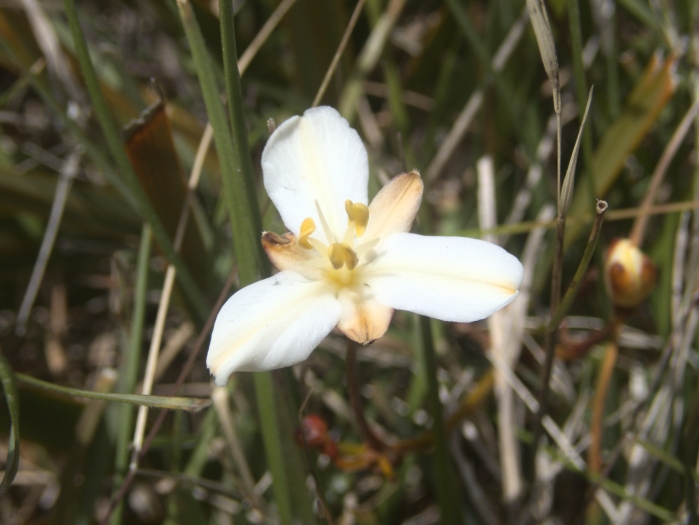New Zealand Iris
(Libertia peregrinans)
New Zealand Iris (Libertia peregrinans)
/
/

Paul Bell-Butler
CC BY 4.0
Image By:
Paul Bell-Butler
Recorded By:
Copyright:
CC BY 4.0
Copyright Notice:
Photo by: Paul Bell-Butler | License Type: CC BY 4.0 | License URL: http://creativecommons.org/licenses/by/4.0/ | Rights Holder: Paul Bell-Butler | Publisher: iNaturalist | Date Created: 2020-12-18T12:38:35-08:00 |


































Estimated Native Range
Summary
Libertia peregrinans, commonly known as New Zealand Iris, is an evergreen perennial herb native to open woodlands and grasslands in New Zealand. It typically grows to a height of 1-3 feet (0.3-0.9 meters) and a width of up to 1 foot (0.3 meters). This plant features stiff, upright, sword-shaped leaves that are a striking orange-brown to bronze color, providing year-round interest. The white, iris-like flowers bloom in spring and early summer, and although they are not particularly showy, they do add a subtle charm to the garden. After flowering, attractive seed pods may form.
New Zealand Iris is valued for its unique foliage color, which can add contrast to garden plantings. It is used in cultivation for mass planting, as an accent in borders, or in contemporary gardens for its architectural form. It requires well-drained soil, tolerates a range of soil types, and is relatively drought-tolerant once established. While it prefers full sun or part shade, it can tolerate a variety of light conditions. This plant is generally low-maintenance but can be affected by slugs and snails. It is also known for its clumping habit, which can be divided in spring to propagate new plants.CC BY-SA 4.0
New Zealand Iris is valued for its unique foliage color, which can add contrast to garden plantings. It is used in cultivation for mass planting, as an accent in borders, or in contemporary gardens for its architectural form. It requires well-drained soil, tolerates a range of soil types, and is relatively drought-tolerant once established. While it prefers full sun or part shade, it can tolerate a variety of light conditions. This plant is generally low-maintenance but can be affected by slugs and snails. It is also known for its clumping habit, which can be divided in spring to propagate new plants.CC BY-SA 4.0
Plant Description
- Plant Type: Grass, Herb
- Height: 1-3 feet
- Width: 0.333-1 feet
- Growth Rate: Moderate
- Flower Color: White
- Flowering Season: Spring, Summer
- Leaf Retention: Evergreen
Growth Requirements
- Sun: Full Sun, Part Shade
- Water: Medium
- Drainage: Medium
Common Uses
Bird Garden, Border Plant, Butterfly Garden, Deer Resistant, Drought Tolerant, Groundcover, Low Maintenance, Potted Plant, Rock Garden, Salt Tolerant
Natural Habitat
Open woodlands and grasslands in New Zealand
Other Names
Common Names:
Scientific Names: , Libertia peregrinans,
GBIF Accepted Name: Libertia peregrinans Cockayne & Allan